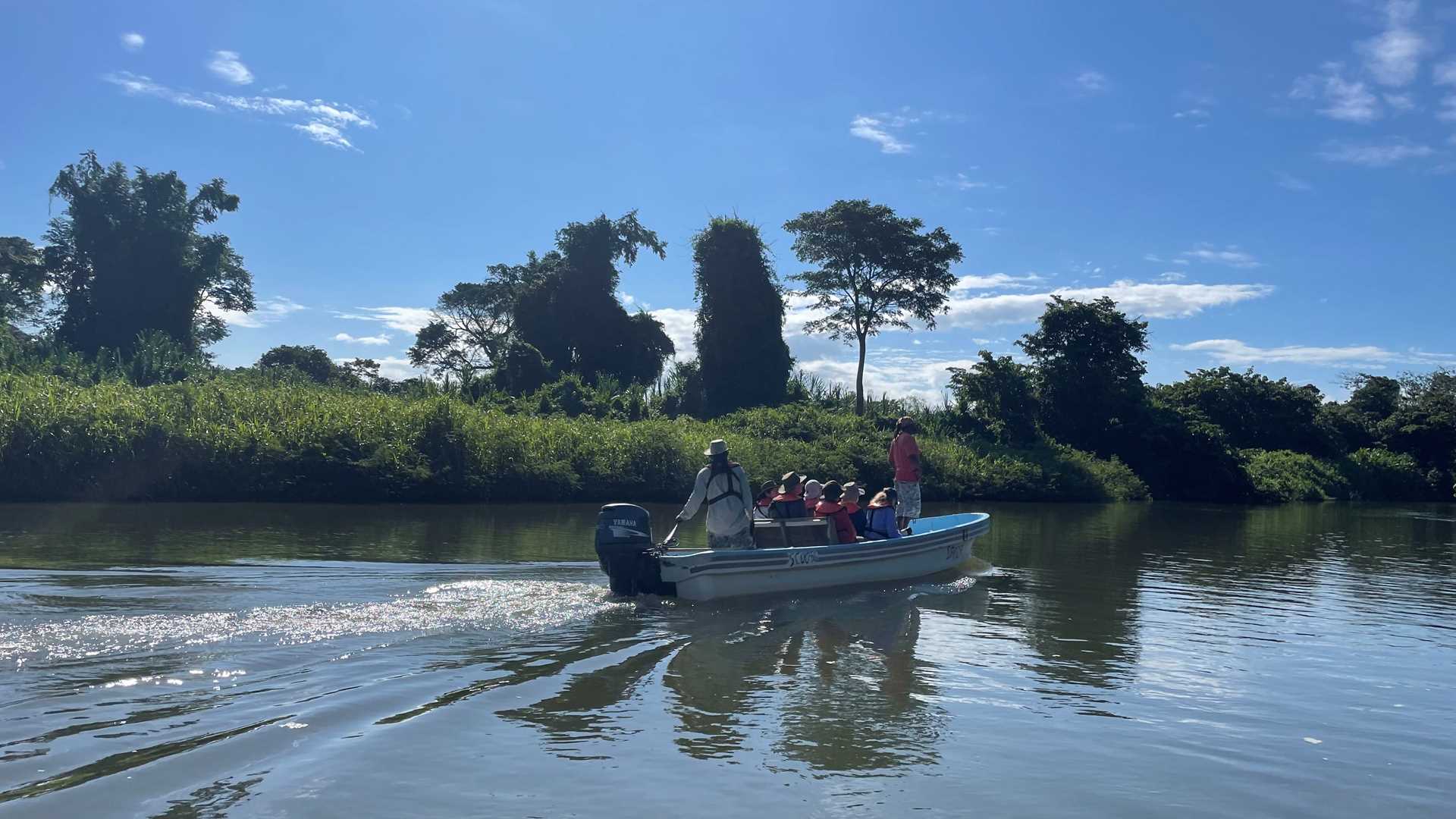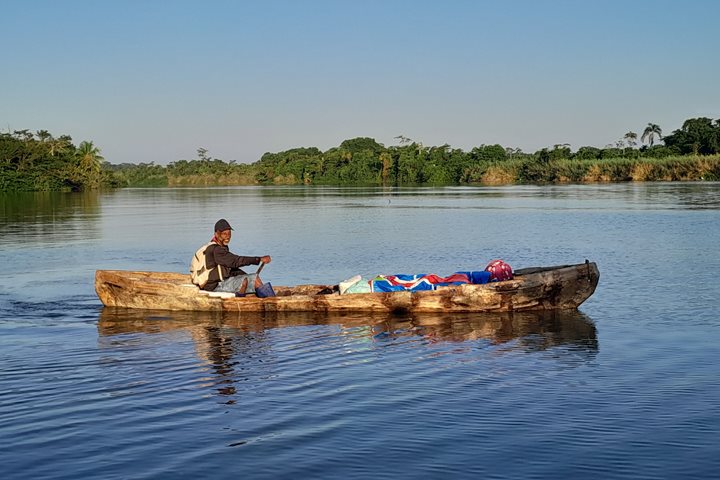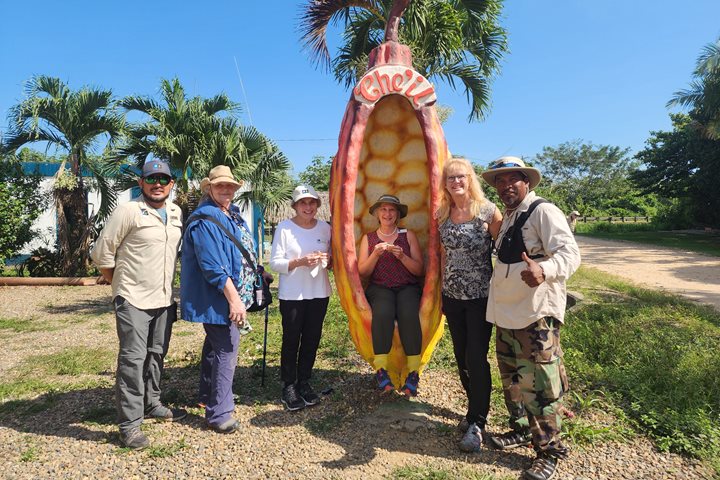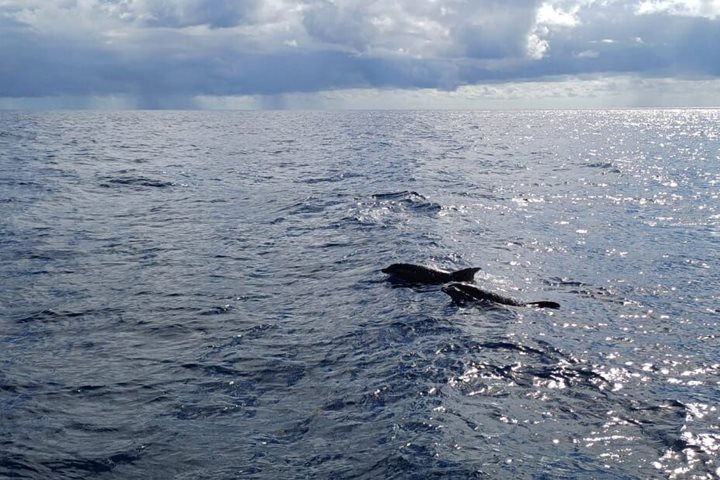We woke up early this morning to venture upstream on the Monkey River. Our early morning start gave us an opportunity to view wildlife during the most active time of day, just after dawn. Starting in Monkey River Town, we picked up our guides who expertly navigated the shallow river while pointing out shore dwelling birds and iguanas. Farther upriver, we heard what sounded like dinosaurs in the trees. We slowed our motors and viewed a whole troop of howler monkeys feeding. Male howler monkeys have an enlarged hyoid bone in their throat that amplifies their voice, making each “howl” identifiable for miles around.
After our jungle cruise, we repositioned the boat to Laughingbird Caye, a national park and World Heritage Site. We spent the afternoon lounging and snorkeling. Calm seas allowed for impressive views of the corals and shoaling fish. Some snorkelers even spotted nurse sharks and barracudas in the shallows. Just another day in paradise here in Belize!







